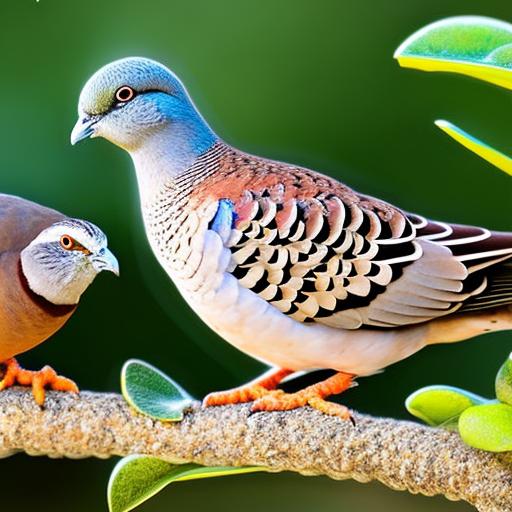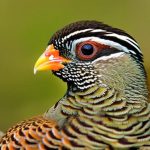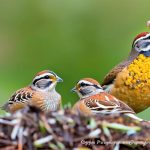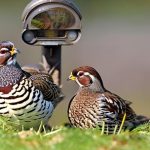Button quails and ringneck doves are two popular species of birds that are often kept as pets. Both of these birds are known for their small size, gentle nature, and unique characteristics that make them interesting and enjoyable to observe. Button quails, also known as Chinese painted quails, are small ground-dwelling birds that are native to Southeast Asia. They are known for their colorful plumage and distinctive button-like feathers on their wings. Ringneck doves, on the other hand, are a species of dove that is native to Africa and Asia. They are characterized by their gentle cooing sounds and beautiful plumage, with a distinctive ring around their necks.
Button quails and ringneck doves are both popular choices for bird enthusiasts due to their peaceful nature and relatively low maintenance requirements. These birds can be kept in a variety of living environments, including aviaries, cages, or even as free-roaming pets in a bird-safe indoor space. Both button quails and ringneck doves are social birds that thrive in the company of their own kind, making them excellent choices for those looking to keep multiple birds together. In the following sections, we will explore the compatibility of button quails and ringneck doves, as well as the ideal living environment, feeding and nutrition, health considerations, social interactions, and behavior of these fascinating birds.
Key Takeaways
- Button quails and ringneck doves are small, ground-dwelling birds that are popular as pets due to their gentle nature and low maintenance requirements.
- Button quails and ringneck doves can be compatible in the same living environment as long as there is enough space and hiding spots for the quails to feel safe.
- The ideal living environment for button quails and ringneck doves should include a spacious cage or aviary with plenty of hiding spots, soft bedding, and access to natural light.
- Button quails and ringneck doves have different dietary needs, with quails requiring a higher protein diet and doves needing a seed-based diet supplemented with fruits and vegetables.
- It is important to monitor the health and wellness of button quails and ringneck doves by providing regular veterinary check-ups, maintaining a clean living environment, and observing their behavior for any signs of illness or distress.
Understanding the Compatibility of Button Quails and Ringneck Doves
Button quails and ringneck doves are generally compatible with each other when kept in the same living environment. Both species are peaceful and non-aggressive, making them unlikely to engage in aggressive behaviors towards each other. However, it is important to note that button quails are ground-dwelling birds, while ringneck doves are arboreal, meaning they prefer to perch and roost in elevated areas. This difference in habitat preference means that it is essential to provide a living environment that accommodates the needs of both species.
When housing button quails and ringneck doves together, it is important to provide a spacious living environment that includes both ground-level areas for the quails to forage and elevated perches for the doves to roost. Additionally, providing hiding spots and visual barriers can help reduce stress and promote a harmonious living environment for both species. It is also important to monitor their interactions closely, especially during feeding times, to ensure that all birds have access to food and water without competition or aggression. Overall, with proper planning and consideration for their individual needs, button quails and ringneck doves can coexist peacefully in the same living environment, providing bird enthusiasts with the opportunity to enjoy the unique characteristics of both species.
Creating the Ideal Living Environment for Button Quails and Ringneck Doves
Creating the ideal living environment for button quails and ringneck doves involves providing a space that meets the specific needs of each species. For button quails, a ground-level living area with plenty of substrate for foraging is essential. This can be achieved by using a spacious aviary or a large cage with a solid bottom to prevent the quails from escaping. Adding natural materials such as sand, soil, or bedding can provide a suitable substrate for the quails to scratch and forage for food. Additionally, providing hiding spots such as plants or shelters can help create a sense of security for the quails.
For ringneck doves, it is important to provide elevated perches and roosting spots within the living environment. This can be achieved by adding branches, platforms, or specially designed perches at varying heights to accommodate the doves’ natural roosting behavior. Providing nesting boxes or enclosed spaces can also give the doves a sense of security and privacy for breeding or resting. It is important to ensure that the living environment is spacious enough to accommodate the natural behaviors of both species, allowing them to move freely and engage in their natural behaviors.
In addition to providing suitable living spaces for both button quails and ringneck doves, it is important to consider the overall safety and security of the living environment. This includes ensuring that the enclosure is predator-proof, well-ventilated, and free from any potential hazards such as toxic plants or sharp objects. By creating an ideal living environment that meets the specific needs of both species while prioritizing their safety and well-being, bird enthusiasts can provide a comfortable and enriching space for their button quails and ringneck doves to thrive.
Feeding and Nutrition for Button Quails and Ringneck Doves
Feeding and nutrition play a crucial role in the health and well-being of button quails and ringneck doves. Both species have specific dietary requirements that must be met to ensure their optimal health. Button quails are omnivorous birds that require a varied diet consisting of seeds, grains, insects, and fresh greens. Commercially available game bird or finch mixes can provide a good base diet for button quails, supplemented with mealworms, small crickets, and fresh vegetables such as leafy greens, carrots, and peas. It is important to provide access to grit or small stones to aid in digestion, as well as calcium supplements such as crushed eggshells or oyster shell for egg-laying females.
Ringneck doves have a primarily seed-based diet that should include a high-quality dove or pigeon mix as the main staple. This can be supplemented with small amounts of fresh fruits such as apples, berries, or melons, as well as leafy greens and vegetables. It is important to avoid feeding ringneck doves avocados, chocolate, caffeine, or high-sodium foods, as these can be toxic to birds. Additionally, providing access to grit or crushed oyster shell can help aid in digestion and provide essential minerals for overall health.
When housing button quails and ringneck doves together, it is important to ensure that both species have access to their specific dietary requirements without competition or aggression. This can be achieved by providing multiple feeding stations within the living environment, as well as monitoring their feeding behaviors to ensure that all birds are receiving adequate nutrition. By meeting the specific dietary needs of both button quails and ringneck doves, bird enthusiasts can help promote their overall health and well-being.
Health and Wellness Considerations for Button Quails and Ringneck Doves
Maintaining the health and wellness of button quails and ringneck doves requires regular monitoring, proper care, and attention to their specific needs. Both species are generally hardy birds when provided with suitable living conditions and proper nutrition. However, there are several health considerations that bird enthusiasts should be aware of to ensure the well-being of their feathered companions.
One common health concern for button quails is egg binding in females, which occurs when an egg becomes stuck in the reproductive tract. This can be a life-threatening condition if not addressed promptly. Providing a calcium supplement such as crushed eggshells or oyster shell can help prevent egg binding in female quails. Additionally, ensuring that the living environment is free from any potential hazards such as sharp objects or toxic plants can help reduce the risk of injury or illness.
Ringneck doves are susceptible to respiratory infections if exposed to drafts or poor air quality. Providing a well-ventilated living environment with clean bedding and regular cage maintenance can help prevent respiratory issues in doves. Additionally, monitoring their overall behavior and appearance for any signs of illness such as lethargy, fluffed feathers, or changes in appetite can help identify potential health concerns early on.
Regular veterinary check-ups are recommended for both button quails and ringneck doves to ensure that they receive proper care and any necessary medical attention. By staying proactive in monitoring their health and addressing any concerns promptly, bird enthusiasts can help ensure the long-term health and wellness of their button quails and ringneck doves.
Social Interactions and Behavior between Button Quails and Ringneck Doves
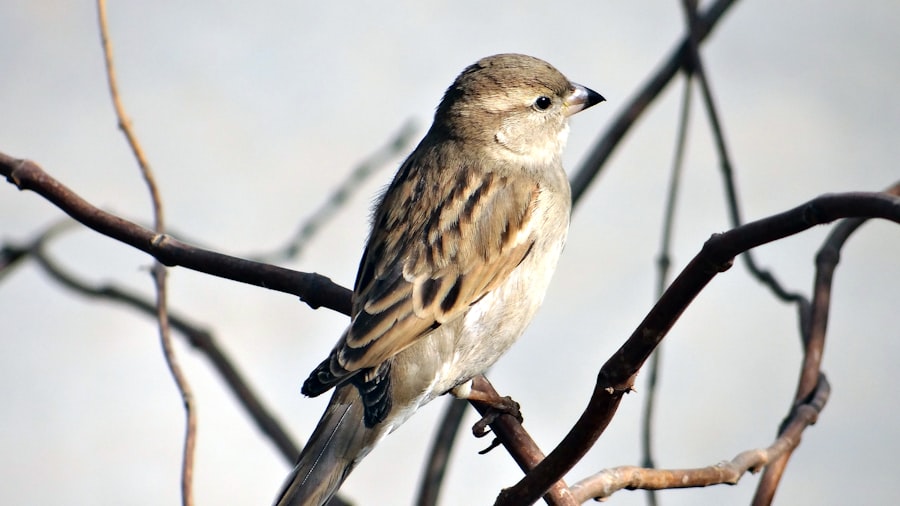
Button quails and ringneck doves are social birds that thrive in the company of their own kind. When housed together in the same living environment, both species can exhibit interesting social interactions and behaviors that reflect their natural instincts.
Button quails are known for their ground-dwelling behavior, spending much of their time foraging for food on the substrate. They are social birds that often form small flocks within their group, engaging in behaviors such as dust bathing, preening each other’s feathers, and vocalizing with soft chirps. Male button quails may also perform courtship displays such as puffing up their feathers and making soft calls to attract females during breeding season.
Ringneck doves are arboreal birds that prefer to perch and roost in elevated areas within their living environment. They are known for their gentle cooing sounds and social nature, often forming close bonds with their flock mates. Doves may engage in behaviors such as preening each other’s feathers, allopreening (mutual grooming), or engaging in soft vocalizations as a form of communication within their group.
When housed together, button quails and ringneck doves may exhibit mutual curiosity towards each other without displaying aggressive behaviors. It is important to provide visual barriers or hiding spots within the living environment to allow each species to have privacy when needed. By observing their social interactions and behaviors closely, bird enthusiasts can gain insight into the fascinating dynamics between button quails and ringneck doves within their shared living space.
Enjoying the Company of Button Quails and Ringneck Doves
Button quails and ringneck doves are fascinating birds that offer bird enthusiasts the opportunity to observe unique behaviors and characteristics within a shared living environment. By understanding their compatibility, creating an ideal living environment, providing proper nutrition, monitoring their health considerations, and observing their social interactions and behaviors, bird enthusiasts can enjoy the company of these delightful birds while promoting their overall well-being.
Whether kept as pets in an indoor aviary or outdoor enclosure, button quails and ringneck doves can bring joy and entertainment with their gentle nature and captivating presence. Their peaceful coexistence within a shared living space reflects the harmonious relationship between two distinct bird species with unique traits that make them a delightful addition to any bird enthusiast’s collection.
In conclusion, by providing attentive care and consideration for their individual needs, bird enthusiasts can create a fulfilling experience while enjoying the company of button quails and ringneck doves in their homes or outdoor spaces. With proper care and attention to their specific requirements, these charming birds can thrive while bringing joy and companionship to those who appreciate their endearing qualities.
If you’re considering keeping button quails with ringneck doves, you may also be interested in creating a large chicken coop to accommodate multiple bird species. Poultry Wizard offers insightful tips and ideas for building a spacious and functional coop in their article on large chicken coop ideas. This resource can help you create a harmonious living environment for your diverse flock of birds.
FAQs
What are button quails and ringneck doves?
Button quails are small ground-dwelling birds that are often kept as pets. They are known for their small size and colorful plumage. Ringneck doves are also popular as pets and are known for their gentle nature and distinctive cooing sound.
Can button quails and ringneck doves be kept together?
Yes, button quails and ringneck doves can be kept together in the same aviary or enclosure. They are generally compatible and can coexist peacefully.
What should be considered when keeping button quails with ringneck doves?
When keeping button quails with ringneck doves, it is important to provide enough space for both species to move around comfortably. Additionally, it is important to ensure that the enclosure is secure to prevent any escapes.
What should the diet of button quails and ringneck doves consist of?
Button quails and ringneck doves have different dietary requirements. Button quails should be provided with a diet that includes a mix of seeds, insects, and greens. Ringneck doves, on the other hand, primarily eat seeds and grains. It is important to provide a balanced diet for both species.
Are there any potential conflicts between button quails and ringneck doves?
While button quails and ringneck doves are generally compatible, there may be some potential conflicts, especially during breeding season. It is important to monitor their behavior and provide enough hiding spots and nesting areas to minimize any potential conflicts.
Meet Walter, the feathered-friend fanatic of Florida! Nestled in the sunshine state, Walter struts through life with his feathered companions, clucking his way to happiness. With a coop that’s fancier than a five-star hotel, he’s the Don Juan of the chicken world. When he’s not teaching his hens to do the cha-cha, you’ll find him in a heated debate with his prized rooster, Sir Clucks-a-Lot. Walter’s poultry passion is no yolk; he’s the sunny-side-up guy you never knew you needed in your flock of friends!

